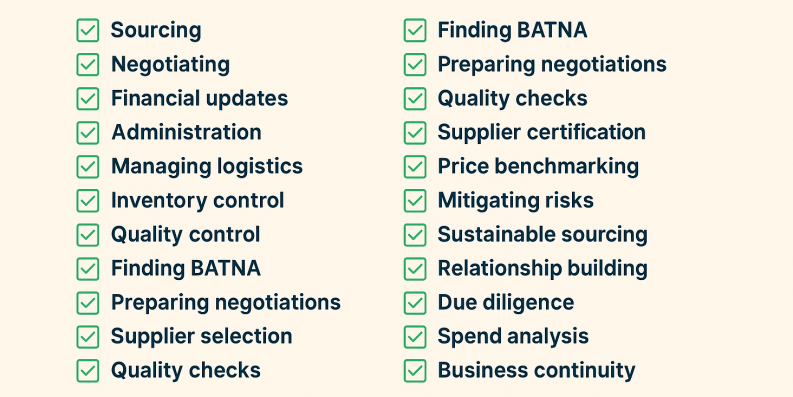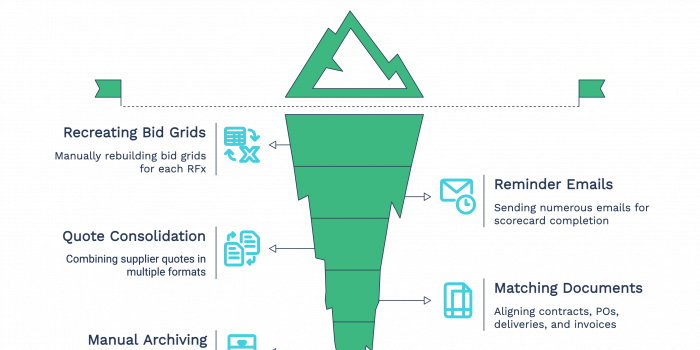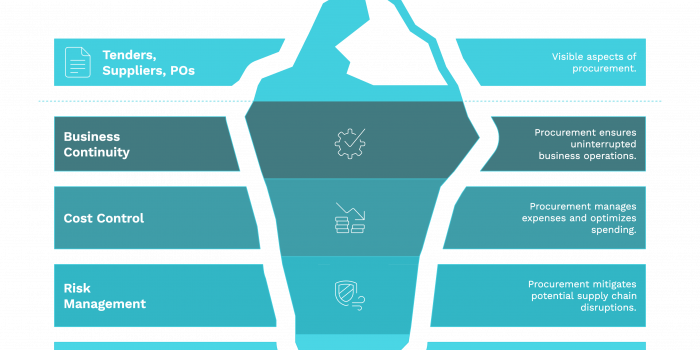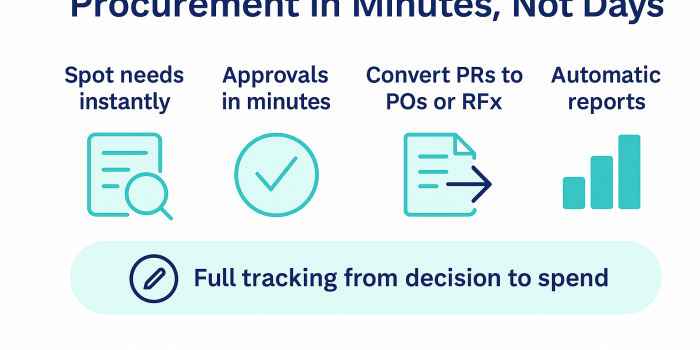Procurement is More Than Sourcing and Negotiating
When most people think about procurement, two things come to mind: sourcing and negotiating. That’s what sales teams focus on. That’s what’s usually in the pitch decks. And that’s what procurement professionals are constantly asked to justify. But here’s the reality: sourcing and negotiating are just two boxes on a

When most people think about procurement, two things come to mind: sourcing and negotiating. That’s what sales teams focus on. That’s what’s usually in the pitch decks. And that’s what procurement professionals are constantly asked to justify.
But here’s the reality: sourcing and negotiating are just two boxes on a much longer checklist.
The Real Procurement To-Do List
Procurement today touches nearly every part of the business — from compliance and sustainability to risk management and supplier performance. Here’s a closer look at what a real procurement workload actually involves:
Sourcing
The process of identifying, evaluating, and engaging suppliers to provide goods and services. It includes market research, supplier discovery, and initial outreach.
Negotiating
Reaching agreements with suppliers on pricing, delivery timelines, payment terms, and service levels.
Financial Updates
Tracking and updating procurement-related budgets, forecasts, and spend allocations in collaboration with finance teams.
Administration
Day-to-day tasks like issuing purchase orders, managing approvals, maintaining records, and tracking procurement documentation.
Managing Logistics
Coordinating transportation, delivery schedules, and warehousing to ensure timely and cost-effective fulfillment.
Inventory Control
Maintaining optimal stock levels, setting reorder points, and avoiding both shortages and excess inventory.
Quality Control
Verifying that goods and services meet agreed-upon standards, through inspections, testing, and compliance tracking.
Finding BATNA (Best Alternative to a Negotiated Agreement)
Establishing a strong fallback option in case negotiations break down, giving the buyer leverage and confidence.
Preparing Negotiations
Gathering market data, analysing supplier history, and defining strategic goals before entering discussions.
Supplier Selection
Evaluating and choosing suppliers based on price, quality, reliability, capacity, and compliance criteria.
Quality Checks
Ongoing evaluations of supplier performance to ensure they continue meeting standards beyond the initial contract.
Supplier Certification
Validating that suppliers hold necessary certifications, such as ISO, tax compliance, or sustainability credentials.
Price Benchmarking
Comparing supplier prices across markets, time periods, or categories to ensure competitive rates.
Mitigating Risks
Proactively identifying and addressing potential disruptions — from geopolitical issues to supplier insolvency.
Sustainable Sourcing
Prioritising vendors who meet environmental, social, and governance (ESG) criteria as part of responsible procurement.
Relationship Building
Developing long-term, trust-based relationships with strategic suppliers to enable better collaboration and innovation.
Due Diligence
Conducting thorough background checks on suppliers’ legal, financial, and reputational standing.
Spend Analysis
Breaking down procurement spend to identify cost-saving opportunities, maverick spend, and performance gaps.
Business Continuity
Ensuring the organisation can continue sourcing goods and services during crises or supply chain disruptions.
Contract Management
Tracking contract terms, renewals, milestones, and obligations to maintain compliance and avoid penalties.
And that’s just the core.
The Perception Problem
In many organisations, procurement is viewed as a transactional function — an internal service that exists to “get quotes” or “close deals.” The strategic impact is often overlooked. But procurement isn’t just about cost-cutting — it’s about value creation, business continuity, and operational efficiency.
For example:
- Procurement ensures contracts don’t lapse silently.
- Procurement mitigates geopolitical risk by diversifying supplier bases.
- Procurement ensures ESG goals are enforced through supplier compliance.
These aren’t just administrative tasks. They’re critical drivers of business resilience.
What This Means for Procurement Leaders
Procurement teams must begin actively repositioning themselves. That means:
- Educating internal stakeholders about the full scope of the role
- Digitising repetitive workflows to free up time for strategic work
- Adopting tools like Scale or AI assistants like ChatGPT to handle evaluation, spend tracking, and supplier engagement
- Tracking and communicating impact beyond price savings: risk avoided, value retained, partnerships grown
A Shift in Tools, Too
As the role expands, so should the toolkit.
- Spreadsheets won’t cut it for supplier scorecards
- PDFs won’t scale for contract tracking
- Email chains won’t help with urgent approvals across regions
Today’s procurement teams need platforms that match the complexity of the job — and automation tools that reduce the manual burden.
Evolution of Procurement
Procurement has evolved — and it’s time everyone else caught up.
Let’s stop limiting procurement to “sourcing and negotiating” and start recognising the full spectrum of value it delivers every day.








